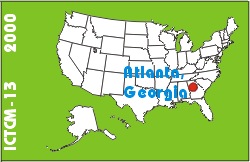
Electronic Proceedings of the Thirteenth Annual International Conference on Technology in Collegiate MathematicsAtlanta, Georgia, November 16-19, 2000Paper P003Exploring Optimization in Calculus-Student Projects in Finding Absolute Extrema on a Closed Interval Domain |
Barbara L. PowerSchool of Science Penn State Erie, The Behrend College Station Road Erie, PA 16563-0203 USA Phone: (814) 898-6349 Fax: (814) 898-6213 blp4@psu.edu |
| Click to access this paper: |
ABSTRACT
Many calculus problems involve finding the greatest or smallest value (or values) that a function assumes over an appropriate domain. These greatest or smallest value points are called global or absolute extrema. In this Calculus I optimization project, Finding Absolute Extrema on a Closed Interval Domain, students work in groups outside of class to investigate absolute extrema.The calculus reform movement of the early 90's has revitalized the teaching of calculus. The reform projects that have evolved over the years vary widely, in curriculum and in technology. However, several themes emerge in most projects:
- Calculus should be learned as an interplay of algebraic, numerical, and graphical data.
- Students must be actively involved in discovery, experimentation, and open-ended problem solving. Cooperative learning is more active than individual learning.
- Appropriate technology can facilitate the transformation from manipulating symbols to understanding the concepts of calculus.
- Technical writing is an important component of active learning. As students explain their mathematical work to others, they deepen their understanding of that work.
The Calculus I optimization project presented at this ICTCM conference was designed to meet the four criteria, which are stated above. As the student groups investigate the problems algebraically, and/or numerically, and/or graphically, they are learning an important application of the derivative.
The graphing calculator was chosen as the technology vehicle for this attempt to improve the students' understanding of calculus. Penn State Erie requires a graphing calculator for all calculus students (TI-83 recommended). This enables the students to experience hands-on learning without the need for additional computer facilities for the calculus program.
I have incorporated group projects in calculus since 1993. It has been my experience that the amount of time that the students invest in learning calculus algebraically, numerically, and graphically (using cooperative learning, technology, and technical writing) is well worth the effort.
Keyword(s): calculus, graphing calculators
